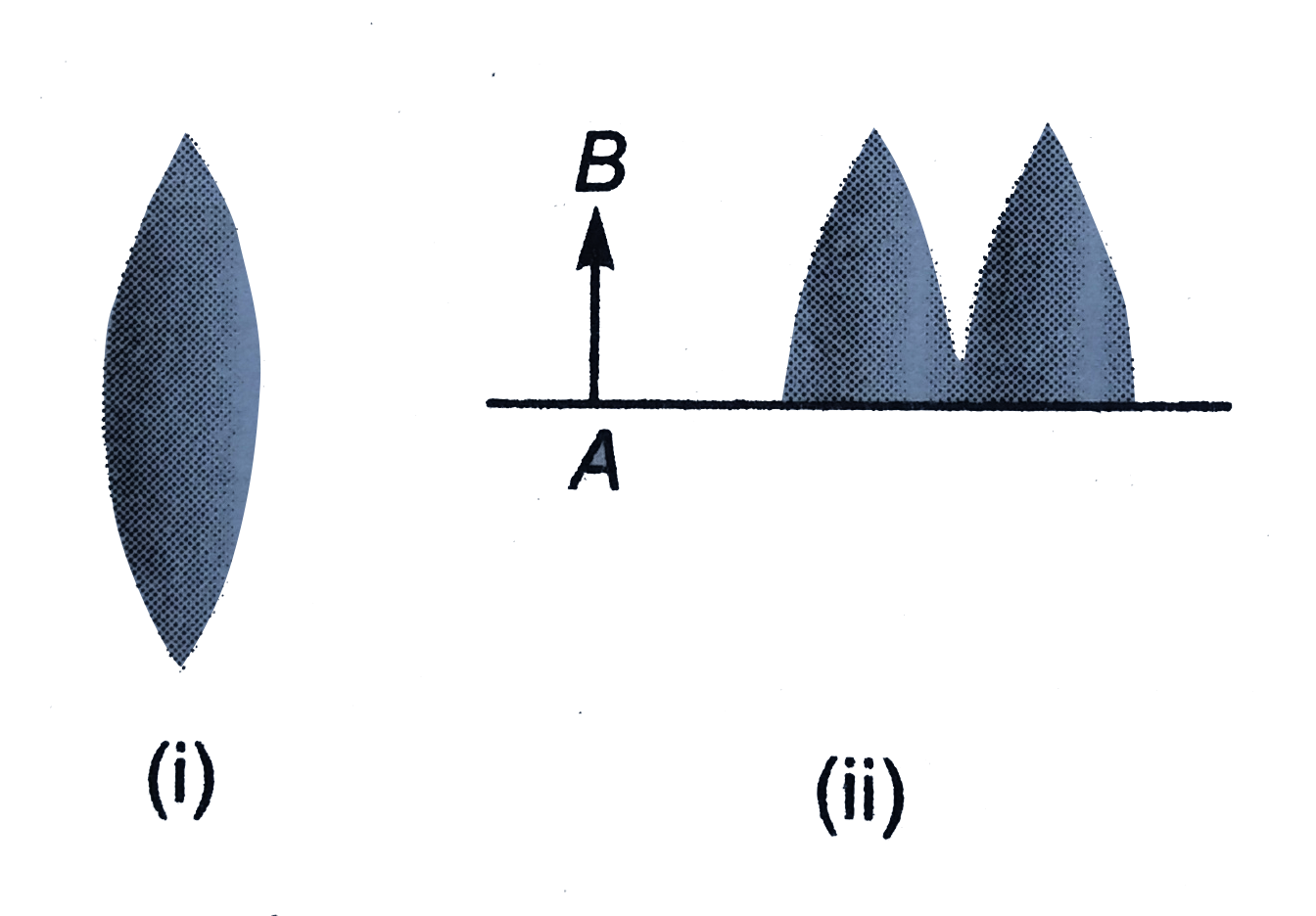An equi-convex lens of μ=1.5andR=20cm is cut into two equal parts along its axis. Two parts are then separated by a distance of 120cm (as shown in figure). An object of height 3mm is placed at a distance of 30cm to the left of first half lens. The final image will form at

120cm to the right of first half lens, 3mm in size and inverted
150cm to the right of first half lens, 3mm in size and erect
120cm to the right of first half lens, 4mm in size and inverted
150cm to the right of first half lens, 4mm in size and erect
The correct Answer is:B
1f=(1.5−1)(120−1−20)
⇒f=+20cm
1v1−1−30=1+20
∴v1=+60cm
m1=v1u1=+60−30=−2
For second lens,
1v2−1−60=1+20
v2=+30cm
m2=v2u2=+30−60=−12
m=m1m2=1
Final image is 30cm to the right of second lens or
150cm to the right of first lens.
m=1
Hence, image height =object height
=3mm
Topper's Solved these Questions
- REFRACTION OF LIGHTBOOK - DC PANDEY ENGLISHCHAPTER - REFRACTION OF LIGHTEXERCISE - Single Correct Option
3 Videos
- REFRACTION OF LIGHTBOOK - DC PANDEY ENGLISHCHAPTER - REFRACTION OF LIGHTEXERCISE - more than one correct option
1 Videos
- REFRACTION OF LIGHTBOOK - DC PANDEY ENGLISHCHAPTER - REFRACTION OF LIGHTEXERCISE - Subjective Questions
8 Videos
- REFLECTION OF LIGHTBOOK - DC PANDEY ENGLISHCHAPTER - REFLECTION OF LIGHTEXERCISE - Subjective
9 Videos
- SEMICONDUCTORSBOOK - DC PANDEY ENGLISHCHAPTER - SEMICONDUCTORSEXERCISE - Subjective
12 Videos
Similar Questions
In the figure (i) a thin lens of focal length 10cm is shown. The lens is cut into two equal parts, and the parts are arranged as shown in the figure (ii). An object AB of height 1cm is placed at distance of 7.5cm from the arrangement. The height of the final image will be:

View SolutionA convex lens of focal length 10 cm is painted black at the middle portion as shown in figure. An object placed at a distance of 20 cm from the lens. Then

View SolutionIn Fig.(i), a lens of focal length 10cm is shown. It is cut into two parts and placed as shown in Fig.(ii). An object AB of light 1cm is placed at a distance of 7.5cm. The height of the image will be

View SolutionThe plane surface of a plano-convex lens of focal length 60 cm is silvered. A point object is placed at a distance 20 cm from the lens. Find the position and nature of the final image formed.
View SolutionFind distanace of image from a convex lens of focal length
20cm if object is placed at a distance of 30cm from the lens. Also find its
magnification.
View SolutionA convex lens of focal length 20 cm is placed in front of a convex mirror of focal length 15 cm at a distance of 5 cm. An object of length 2 cm is placed perpendicular to the common axis at a distance of 20 cm from the lens
View SolutionAn object is placed 12cm to the left of a converging lens of focal length 8cm. Another converging lens of 6cm focal lengh is placed at a distance of 30cm to the right of the first lens. The second lens will produce
View SolutionA point object is placed at a distance of 20cm from a thin plano-convex lens of focal length 15cm(μ=1.5). The curved surface is silvered. The image will form at

View SolutionA point object is placed at a distance of 20cm from a thin plano-convex lens of focal length 15cm(μ=1.5). The curved surface is silvered. The image will form at

View SolutionA convex lens of focal length 20 cm is cut long its diameter and the two halves are displaced by t=1 cm along the principal axix. A monochromatic point source of wavelength 476 nm is placed at a distance 40 cm from the first half, as shown in Fig. 2.21. Find the position of the first maximum.

View Solution
